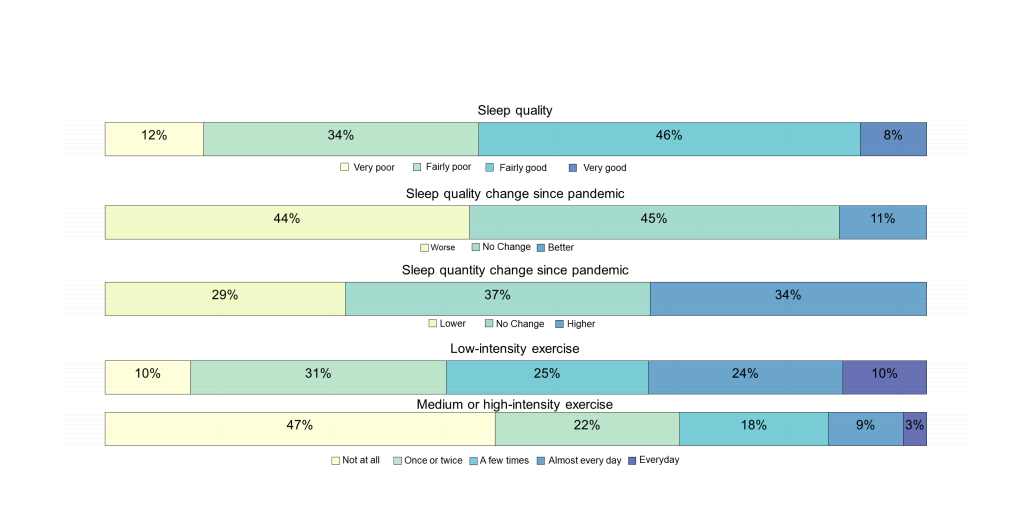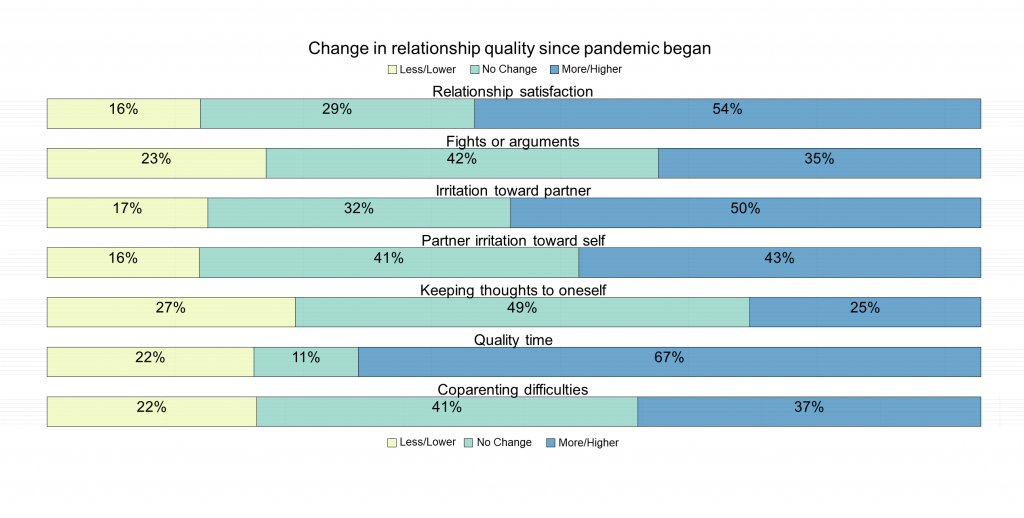May 27th, 2020 – We have a study update!
Just one month after launching, we have enrolled more than 1,000 participants in our study of couples during the Covid-19 pandemic. These are busy, overwhelming times, and we want to express a huge thank you to these folks for sharing their experiences.
(It’s not too late to participate! Click here to take our survey).
We have already learned a lot about our participants, their feelings during the pandemic, and how their relationships are evolving. As promised, here are some of our preliminary results!
Participant Demographics
American & Canadian
As you can see in this interactive map, our participants come from all across the United States (45 states) and Canada (11 provinces).
Mostly Women & White
The majority of our participants are white and are women, with approximately 20% identifying as another gender/ethnicity. Most participants are in their 20’s and 30’s and hold an undergraduate, graduate, or professional degree.

Finances
Participants reported a range of household incomes in both the U.S. and Canada.

Married with Children
The majority of our participants are married and in long-term relationships. Many (379 to be precise) are sheltering in place with children.

Living Through a Pandemic
COVID-19 Experiences
Most participants are sheltering in place with their partners and a handful have direct experiences with COVID-19. Concerns about the pandemic are prevalent and may represent a source of friction with partners. That said, many participants report that they and their partners agree on how to manage the pandemic.

Sleep & Exercise
Though more than half of our participants report getting a decent night’s sleep, for many, sleep quality has worsened since the pandemic began. Despite their confinement, participants are still finding ways to exercise, frequently engaging in low intensity workouts.

Emotions
Participants are experiencing a range of emotions. It is interesting to note that prosocial emotions like gratitude and compassion are common despite the circumstances.

Relationship Changes
Though half of our participants said they were feeling more irritation toward their partners, the majority also reported increases in relationship satisfaction and quality time.

Predictions for the Future
Many of our participants expect their relationships will remain unchanged, though a sizable number also predict further increases in irritation, satisfaction, and quality time.

Division of Labor
Before the Pandemic
Our participants tended to report handling a greater share of their family’s childcare duties. Given our imbalanced gender distribution, we refrain from making gender comparisons.

Since the Pandemic Began
Responsibilities have shifted some, especially in the domain of childcare.

Satisfaction with Division of Labor
Satisfaction with the distribution of duties during the pandemic differs quite a bit across participants.



